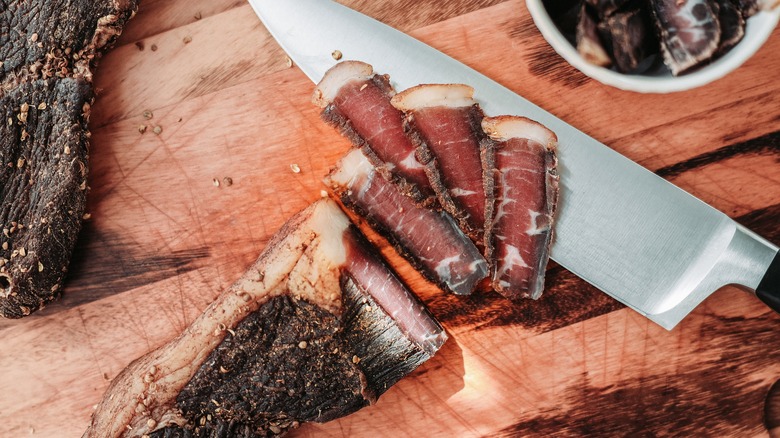The Importance of Freezing Meat Before Making Beef Jerky
Creating beef jerky can be a challenging process if you’re not familiar with the proper techniques. One of the most overlooked steps in the preparation is freezing the meat before slicing it. Many people either use the wrong type of beef or fail to store the finished product correctly, but another common mistake is skipping the freezing step entirely. This small yet crucial step can significantly impact the quality of your final product.
Jon Urbana, founder of KOW Steaks, emphasized the importance of freezing meat before cutting it for beef jerky. “Freezing the meat before slicing definitely helps,” he explained. “About 30 to 60 minutes in the freezer makes it firm and much easier to cut cleanly.” When meat is at room temperature, it tends to be softer and more wobbly, making it difficult to achieve precise cuts. Freezing the meat for just a short time ensures that it becomes firm enough to slice without tearing or crumbling.
However, it’s important not to overdo it. Freezing the beef for too long can cause it to become completely solid, which may affect the taste and texture of the final jerky. The goal is to make the meat firm enough to handle easily without compromising its quality. A good rule of thumb is to freeze the meat for no more than an hour, depending on the thickness and type of cut.
Why Precise Cuts Matter
The way you cut the meat plays a significant role in the texture of the final product. If you don’t take the time to think about how you’re slicing the meat, you could end up with jerky that’s either too tough or too soft. For example, cutting against the grain instead of with it can result in softer, more tender pieces. However, this is much harder to do when the meat is at room temperature. Freezing the meat first makes it easier to identify the grain and cut accordingly.
Another factor to consider is the size of each piece. If the slices are too thick, the jerky may not dry properly and could become overly chewy. On the other hand, if the slices are too thin, they might become flimsy and break apart during the drying process. According to Urbana, the ideal thickness for beef jerky is about half a centimeter. This size allows the meat to retain its structure while still being easy to chew.
Tips for Perfect Beef Jerky
To ensure the best results, follow these key tips:
- Freeze the meat for 30 to 60 minutes before slicing to make it easier to cut cleanly.
- Cut with the grain rather than against it to maintain the desired texture.
- Maintain consistent thickness, aiming for about ½ centimeter.
- Avoid over-freezing the meat, as this can negatively affect the flavor and texture.
By taking the time to prepare your meat properly, you’ll set yourself up for success in creating delicious, high-quality beef jerky. Whether you’re a seasoned chef or a home cook, these simple steps can make a big difference in the final outcome.







